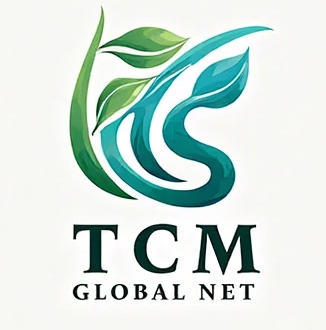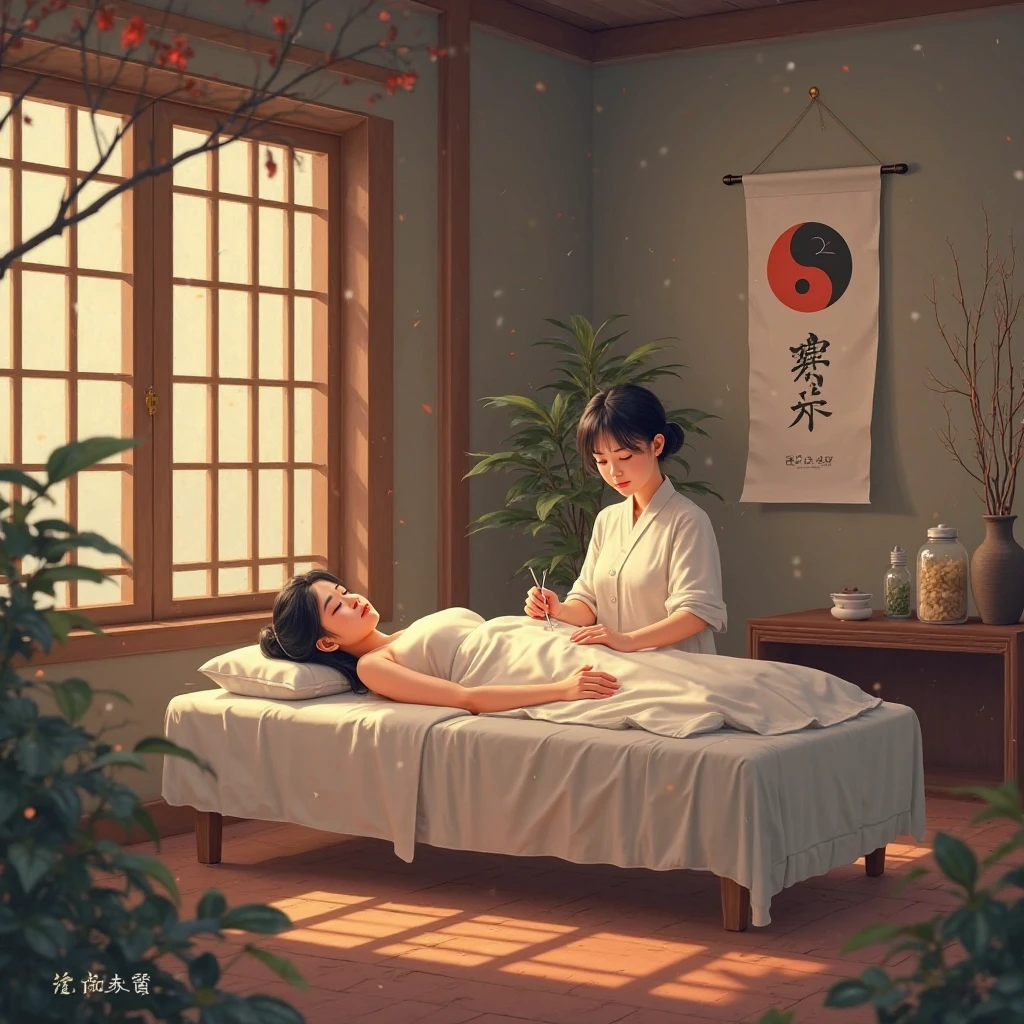What is PMS and its TCM treatment
Definition and symptoms of PMS
Premenstrual Syndrome (PMS) refers to the physical and emotional symptoms that women may experience 1-2 weeks prior to menstruation, such as mood swings, breast tenderness, bloating, fatigue and headaches. According to traditional Chinese medicine (TCM), PMS is mainly related to liver qi stagnation, which affects the smooth flow of qi and blood and leads to various discomforts.
How does TCM treat PMS?
TCM offers several ways to manage PMS:
- Acupuncture: To regulate the flow of qi and blood by stimulating specific acupuncture points, studies have shown that acupuncture is more effective than sham acupuncture and medications, and commonly used points include the foot sanli (SP6), tai chong (LR3), and guan yuan (RN4) (Acupuncture for Premenstrual Syndrome).
- Chinese herbal medicineFor example, Jia Wei Yi San is often used to soothe the liver and regulate qi, relieving emotional and physical discomfort (Identifying Chinese herbal medicine for PMS).
- Lifestyle adjustments: It is recommended to avoid cold foods and consume warm foods; engage in moderate exercise such as yoga; and manage stress through meditation.
Duration and start time of PMS
PMS symptoms usually begin 1-2 weeks before menstruation and gradually disappear after the onset of menstruation, with the duration varying from person to person.TCM believes that the symptoms are related to changes in qi and blood during the menstrual cycle and can be adjusted with treatment (Premenstrual Syndrome (PMS): Symptoms & Treatment).
These terms show that users have a strong need for definitions, symptoms, duration, and methods of relief for PMS, with a particular focus on how TCM can provide solutions.
Definition and symptoms of PMS
PMS refers to the physical and emotional changes that women may experience 1-2 weeks prior to menstruation and affects approximately 80% women of childbearing age. Common symptoms include mood swings, breast tenderness, bloating, fatigue, irritability, and depression (What Is PMS?).
In TCM, PMS is viewed as a deficiency of Qi and Blood due to Liver-Qi stagnation, which manifests as emotional distress and physical discomfort such as breast tenderness and abdominal distension. Other modalities such as spleen deficiency or kidney yang deficiency may also be involved and need to be judged according to the individual's constitution (Manage Premenstrual Syndrome with TCM).
TCM for PMS
TCM offers a variety of ways to manage the PMS, specifically:
acupuncture and moxibustion (Chinese medicine)
Acupuncture regulates the flow of qi and blood by stimulating specific acupuncture points, and studies have shown it to be effective for PMS. a 2019 meta-analysis found that acupuncture significantly increased PMS effectiveness rates, with better results compared to drugs and sham acupuncture (Acupuncture for Premenstrual Syndrome). Another 2011 study showed a risk ratio of 1.55 (95% CI 1.33-1.80, p < 0.00001) for symptom improvement with acupuncture over a control group, with commonly used acupoints including foot-sanli (SP6), taichong (LR3), and guanyuan (RN4) (Acupuncture for premenstrual syndrome).
Acupuncture not only relieves physical symptoms but also improves emotional problems such as irritability and anxiety and is suitable for use 1-2 weeks before menstruation.
herbal remedy
Herbal medicines are customized according to individual patterns, and commonly used formulas such as Jia-Wei-Xiao-Yao-San (加味逍遥散), which accounted for 37.51 TP3T of PMS prescriptions in Taiwan, have the core function of soothing the liver and regulating qi to alleviate emotional and physical discomforts (Identifying Chinese herbal medicine for PMS).
Other herbs that may be used include angelica (Dong Quai), which is commonly used for women's health issues such as irregular menstruation and dysmenorrhea and may help with PMS symptom management (Say Goodbye to PMS Symptoms with Chinese Herbal Remedies).
Other TCM therapies
- moxibustion (Chinese medicine): Assist in relieving PMS symptoms by burning moxa near the acupoints to warm yang and dissipate cold.
- tui na (form of Chinese manual therapy): TCM massage promotes the flow of Qi and blood and is especially good for relieving abdominal bloating and muscle tension.
Duration and start time of PMS
PMS symptoms usually begin 1-2 weeks before menstruation and gradually disappear after the onset of menstruation, with duration varying among individuals (Premenstrual Syndrome (PMS): Symptoms & Treatment).
According to TCM, symptoms are related to changes in qi and blood during the menstrual cycle, with the premenstrual period being a relatively solid period, and treatment can be directed at adjusting the flow of qi and blood during this phase to reduce symptoms (Manage Premenstrual Syndrome with TCM).
TCM Lifestyle Recommendations
In addition to specialized treatment, TCM recommends the following lifestyle modifications:
- catering: Avoid cold and raw foods, especially before menstruation, to avoid aggravating gas stagnation and cramping. Warm foods, such as stews, are recommended, as is an increase in cruciferous vegetables (e.g. broccoli) to balance hormones (How to Treat PMS With Acupuncture and TCM).
- campaigns: Engage in moderate exercise such as yoga, Tai Chi or walking to promote the flow of qi and blood and relieve stress. Avoid excessive strenuous exercise before menstruation to avoid depletion of qi (3 Essential Tips to Banish PMS For Good).
- stress management: Relieve emotional stress and reduce liver qi stagnation through meditation, deep breathing or qigong (Stuck Type TCM Patterns: Diet and Lifestyle Tips).
- sleep: Maintain regular sleep to support overall health and hormone balance.
These suggestions can help women relieve PMS symptoms naturally in their daily lives.
Evidence and disputes
Research supports the effectiveness of acupuncture and herbs for PMS, but individual differences are large and results may vary from person to person. Some studies have shown that the duration of acupuncture intervention has no significant effect on efficacy (Acupuncture for Premenstrual Syndrome), but the controversy lies in the long-term effects and the lack of standardized treatment protocols.TCM's emphasis on individualized treatment makes it difficult to conduct large-scale standardized studies and requires further validation.
Table: Commonly used TCM treatments with corresponding PMS symptoms
| Treatment | primary role | Common PMS Symptoms | backed up by evidence |
|---|---|---|---|
| Acupuncture | Regulates qi and blood, relieves emotional and physical discomfort | Mood swings, breast tenderness | 2019 meta-analysis, RR 1.55 (Acupuncture for PMS) |
| Chinese Herbal Medicine (Plus Flavored Prosperity Powder) | Soothes the liver and regulates qi, balances hormones | Irritability, bloating | Taiwan database, accounting for 37.51 TP3T (Identifying CHM for PMS) |
| Lifestyle adjustments | Promotes chi flow and reduces stress | Fatigue, low mood | Lack of large RCT support, experts suggest |
reach a verdict
Based on hot search terms, TCM websites can attract target users by presenting PMS definitions, symptoms, TCM treatments (such as acupuncture and herbs), and lifestyle advice. Content should focus on practicality and scientific basis to ensure SEO optimization, while providing personalized consulting services to enhance user trust.
You can check out past articles that specialize in treating menstrual problems and gynecological issues:Comprehensive Interpretation and Management Programs of Low Menstrual Intake in Women: Integrating Chinese and Western Medicine.Causes, Symptoms and Treatment Options for Ovarian Cysts in Chinese and Western Medicine.
Key citations
- Acupuncture for Premenstrual Syndrome at Different Intervention Time: A Systemic Review and Meta-Analysis
- Identifying Chinese herbal medicine for premenstrual syndrome: implications from a nationwide database
- Manage Premenstrual Syndrome with TCM - Body with Soul
- How to Treat PMS With Acupuncture and TCM - Art of Wellness
- What Is PMS?
- Premenstrual Syndrome (PMS): Symptoms & Treatment - Cleveland Clinic
- Say Goodbye to PMS Symptoms with Chinese Herbal Remedies - Ashland Family Acupuncture
- 3 Essential Tips to Banish PMS For Good - TCM World
- Stuck Type TCM Patterns: Diet and Lifestyle Tips - Amy Galvan
- Acupuncture for premenstrual syndrome: a systematic review and meta-analysis of randomized controlled trials - Wiley Online Library


Leave a Reply